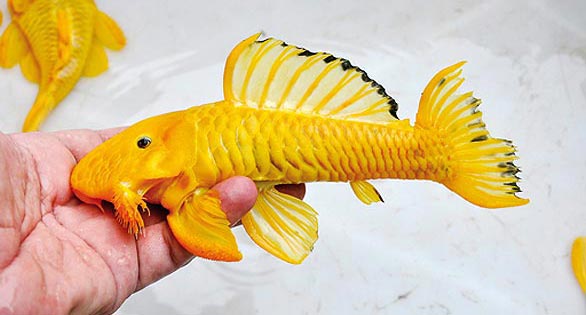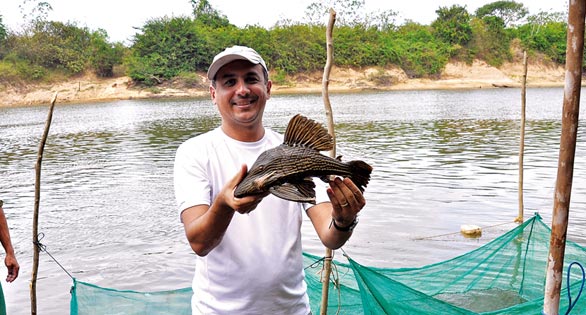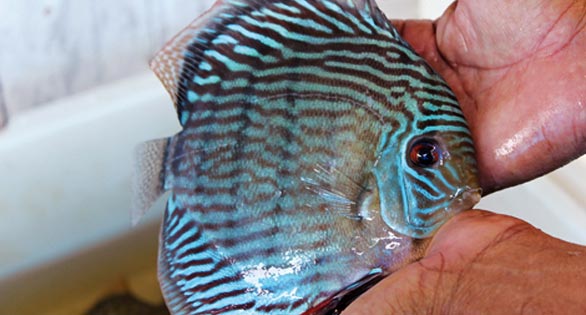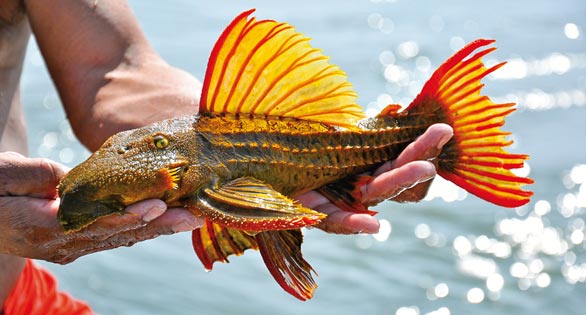
Parancistrus aurantiacus: In this fish the normal coloration at the fin edges comes through, which makes it even more attractive.
By Hans=Georg Evers
Images courtesy Hudson Crizanto
Some time ago we featured Hudson Crizanto’s discus project on the lower Rio Purus in Brazil (Evers 2010). Since then, Crizanto and his company, H & K Ornamental Fish, based in the Brazilian coastal town of Fortaleza, have been working ever harder on this project, and his activities with local fishermen have now expanded to five different collecting localities in Amazonia.
The underlying idea is that the fishermen in the field send him only selected discus and are paid a higher rate in return. The money thus goes directly to the collectors on the spot and the fish populations are spared by virtue of the targeted removal of a small number of specimens.
H & K has now expanded its operations to include other fish species. Crizanto and his fishermen have found a number of particularly colorful armored catfish species, illustrated here, in the previously little-collected Rio Itacaiúnas in the lower Rio Araguaia. They include a previously unknown, apparently new Baryancistrus species with golden yellow spots, which up to now has been known only from the Rio Xingu. It remains unclear whether this species is Baryancistrus niveatus, described from the Rio Araguaia, or a variant of L 26, likewise known from the Araguaia drainage.
The other fishes collected, for example the bright yellow specimens of Parancistrus aurantiacus, intensely colored Panaque cf. armbrusteri L 27, and a particularly beautiful variant of Pseudacanthicus sp. L 24, demonstrate that the Rio Itacaiúnas harbors particularly splendid armored catfishes.
Hudson Crizanto is currently working with the relevant authorities to organize a certificate of sustainability and introduce a green label. Let us hope that this ambitious project is successful and we will be able to present lots of these beauties in these pages!
For more images and the full article in print, see AMAZONAS Volume 2, Number 2, March/April 2013. Subscribe now to receive this issue.









Trackbacks/Pingbacks